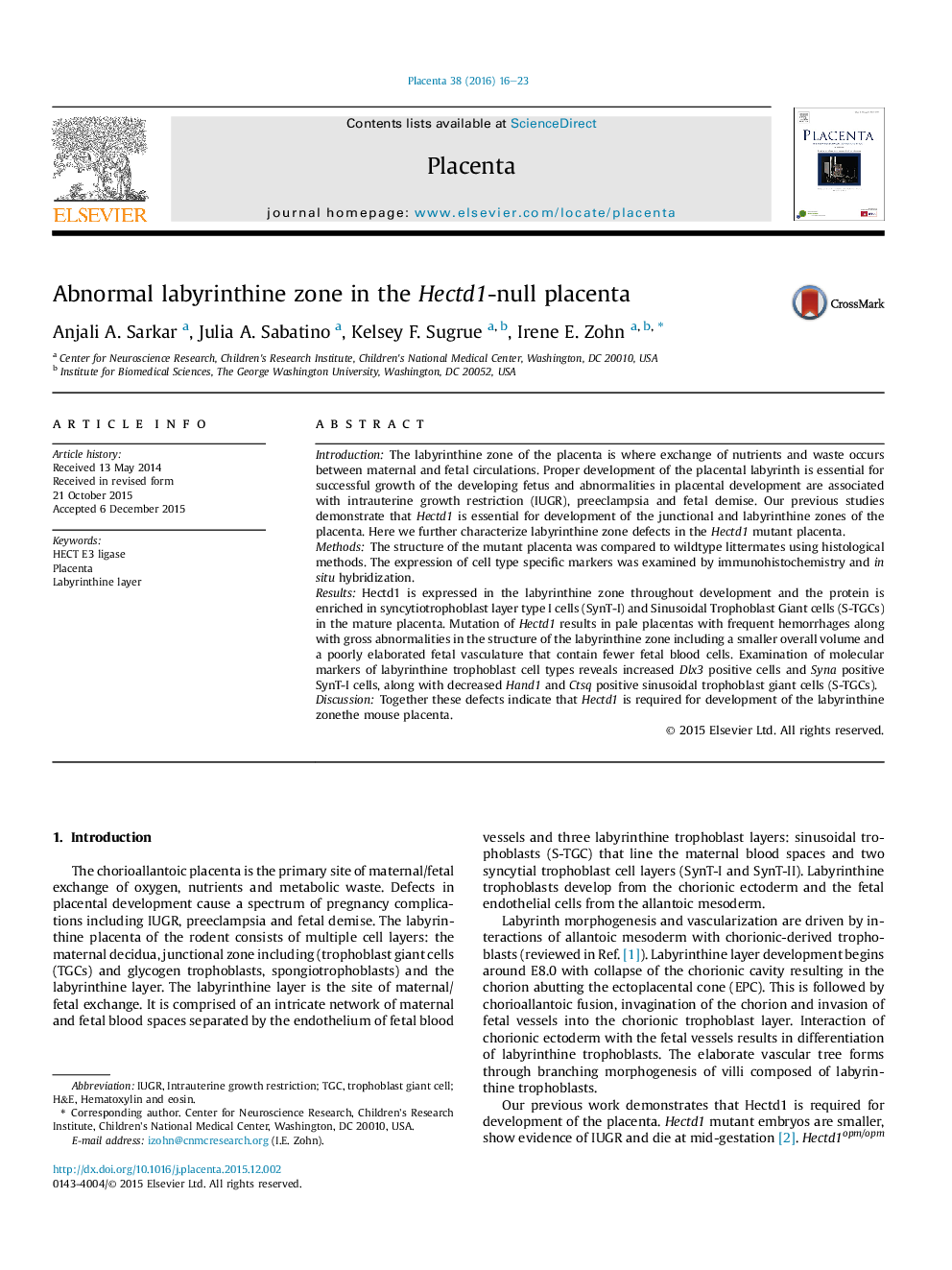| Article ID | Journal | Published Year | Pages | File Type |
|---|---|---|---|---|
| 5894366 | Placenta | 2016 | 8 Pages |
â¢Hectd1 is expressed during development of the labyrinthine placenta.â¢In the mature placenta, Hectd1 protein is localized to SynT-I and S-TGCs.â¢Mutation of Hectd1 results in a smaller labyrinthine zone.â¢Hectd1 mutants show reduced S-TGCs and increased expression of SynT-I markers.â¢The fetal vasculature is less elaborated in the Hectd1 mutant placenta.
IntroductionThe labyrinthine zone of the placenta is where exchange of nutrients and waste occurs between maternal and fetal circulations. Proper development of the placental labyrinth is essential for successful growth of the developing fetus and abnormalities in placental development are associated with intrauterine growth restriction (IUGR), preeclampsia and fetal demise. Our previous studies demonstrate that Hectd1 is essential for development of the junctional and labyrinthine zones of the placenta. Here we further characterize labyrinthine zone defects in the Hectd1 mutant placenta.MethodsThe structure of the mutant placenta was compared to wildtype littermates using histological methods. The expression of cell type specific markers was examined by immunohistochemistry and in situ hybridization.ResultsHectd1 is expressed in the labyrinthine zone throughout development and the protein is enriched in syncytiotrophoblast layer type I cells (SynT-I) and Sinusoidal Trophoblast Giant cells (S-TGCs) in the mature placenta. Mutation of Hectd1 results in pale placentas with frequent hemorrhages along with gross abnormalities in the structure of the labyrinthine zone including a smaller overall volume and a poorly elaborated fetal vasculature that contain fewer fetal blood cells. Examination of molecular markers of labyrinthine trophoblast cell types reveals increased Dlx3 positive cells and Syna positive SynT-I cells, along with decreased Hand1 and Ctsq positive sinusoidal trophoblast giant cells (S-TGCs).DiscussionTogether these defects indicate that Hectd1 is required for development of the labyrinthine zonethe mouse placenta.
